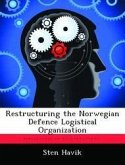This study analyzes maneuver warfare theory and how it influences doctrine. The study analyzes the dichotomy between current Norwegian Army doctrine and a doctrine-based maneuver warfare theory. Maneuver warfare acknowledges friction as being fundamental to warfighting. It focuses on defeating the enemy's will to resist by attacking in both the physical and moral dimension. The combined effects of these attacks result from using an indirect approach to reach the enemy's center of gravity. The use of a high tempo of operations will enhance these effects. This can only be achieved by having a decentralized method of command and units that are organized to generate a combined arms effect on the battlefield. The study provides historical support for the implementation of new tactics through three vignettes. These show tactical principles and trends that can be applied in a modern maneuver warfare doctrine. Based on technological developments, the study concludes that future tactics of the Norwegian infantry should be based on a concept of dispersed and simultaneous attacks. Infantry units should be reduced in size, get a high reconnaissance capacity, enhanced operational and tactical mobility, enhanced firepower, and a command, control, computer, communications, and information (C4I) system that allows for more dispersed operations.








